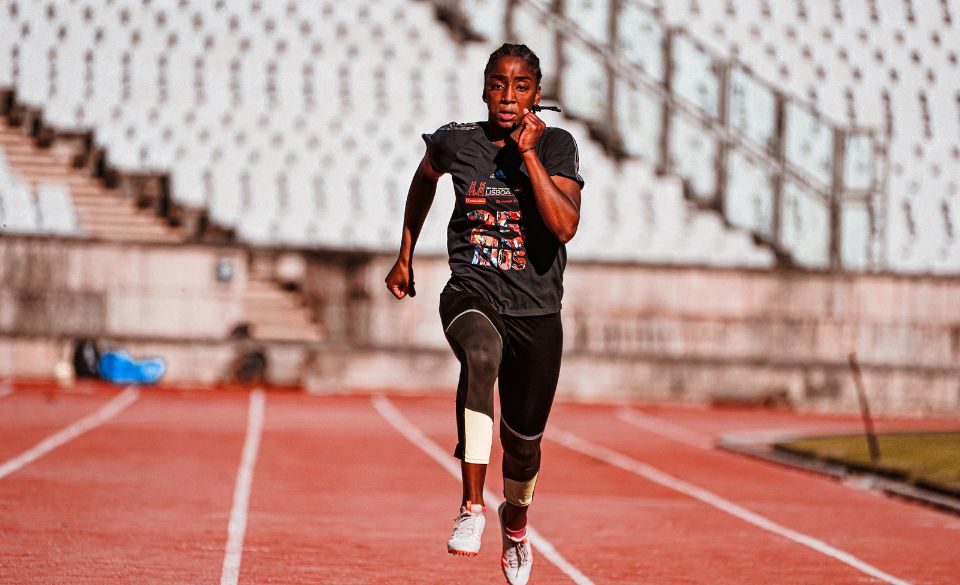
At What Age Will An Athlete Achieve Peak Performance?
Page Contents
- Expanding on the Concept of Athletes’ Prime Age
- The Role of Genetics
- Training and Experience
- Advancements in Sports Science and Technology
- Mental Resilience
- Adapting to Changing Norms
- Balancing Physical Decline with Experience
- Longevity in Endurance Sports
- Overcoming Age-Related Challenges
- The Role of Mentors and Coaching
- Final Words – At What Age Will An Athlete Achieve Peak Performance?
The question of when an athlete reaches their peak performance has been a subject of extensive debate over the years. This debate stems from the fact that examples abound of both elite and amateur athletes experiencing the zenith of their careers at various points along the age spectrum, as well as at every stage in between. Determining this optimal point is valuable for devising long-term training strategies.
Nevertheless, there are credible sources of well-researched data available that provide insights into the typical age ranges when athletes tend to achieve their best results.
For instance, a comprehensive review conducted in New Zealand in 2015 delved into a vast array of estimates regarding the age at which elite athletes tend to reach their prime. This review offered age estimates for numerous sporting disciplines, particularly in swimming and athletics.
In events like sprints, jumps, and throws, both male and female athletes generally hit their peak performance around the age of 25, while triathletes tend to reach their zenith at approximately 27.
For the longer endurance events, the age at which athletes peak tends to be slightly older. Marathoners, for instance, tend to reach their prime at 30 for men and 29 for women. Ironman athletes, on the other hand, tend to achieve their peak performance even later, typically around 32 for men and 34 for women.
In terms of strength, it’s widely accepted that muscle mass naturally starts to decline after the age of 40. Evidence suggests that athletes tend to be at their physical strongest around the age of 25. Research conducted at the University of Toronto corroborates this finding and suggests a plateau in strength typically occurs around the ages of 35 to 40, after which there is an accelerating decline. By the age of 65, this study found that strength can decline by as much as 25 percent.
It’s important to note, however, that these statistics may not hold true for every individual. In fact, there is room for optimism among older athletes. The data may not be universally applicable because various factors, such as advancing technologies and an increasing emphasis on experience and maturity, are leading to a shift in the concept of an athlete’s prime age. As American journalist Brett Bercovici pointed out in a 2018 interview with The Verge, the boundaries of prime athletic age are expanding. Athletes like Tom Brady and Serena Williams continue to excel well into their 30s and 40s, highlighting the significant advantages gained from experience and maturity. Consequently, the notion that the best athletes are often in their mid-30s to early 40s is gaining traction.
Expanding on the Concept of Athletes’ Prime Age
The concept of when an athlete reaches their peak has been a topic of fascination for sports enthusiasts, scientists, and coaches for decades. While the age at which an athlete peaks can vary widely, it’s important to acknowledge the multiple factors that contribute to this phenomenon.
The Role of Genetics
Genetics play a significant role in an athlete’s potential for success and the age at which they may reach their peak. Some individuals are genetically predisposed to excel in certain sports or disciplines, and this can influence the age at which they hit their prime. Genetics can impact factors like muscle fiber composition, aerobic capacity, and other physical attributes that are vital to athletic performance.
Training and Experience
The experience an athlete accumulates over the years is a crucial element in their development. Many elite athletes credit their success to years of training, learning from both victories and defeats, and refining their skills. This experience can lead to improved decision-making, mental toughness, and a deeper understanding of their sport. As Brett Bercovici mentioned in the previous article, the advantages that come with experience and maturity can be so substantial that they can offset the effects of physical decline.
Advancements in Sports Science and Technology
The field of sports science and technology is constantly evolving. New training methods, recovery techniques, and equipment are continually being developed to enhance athletes’ performance and extend their careers. Cutting-edge technologies like cryotherapy, advanced nutrition, and biomechanical analysis can help athletes maintain their competitive edge well into their 30s and 40s.
Mental Resilience
The mental aspect of sports cannot be underestimated. Athletes who possess exceptional mental resilience and a strong desire to succeed can maintain their peak performance well beyond what was previously considered their prime. This determination and psychological fortitude can be a game-changer, allowing athletes to defy conventional expectations.
Adapting to Changing Norms
The shifting landscape of sports is also contributing to a change in the perception of prime athletic age. In some sports, athletes are increasingly competing at a high level into their late 30s and even 40s. As competition becomes fiercer and training methods become more advanced, athletes are continuously pushing the boundaries of what is possible in their respective sports.
In summary, while the age at which an athlete reaches their peak is a subject of debate, it’s clear that various factors, including genetics, training, experience, technology, mental resilience, and evolving norms, all contribute to the evolving concept of prime athletic age. This evolution is gradually redefining the limits of athletic performance and extending the careers of many exceptional athletes. As a result, the idea that older athletes can excel and even dominate their sports is becoming increasingly prevalent, leading to a new era in the world of athletics.
Balancing Physical Decline with Experience
One of the most intriguing aspects of athletes defying conventional age limits is the ability to balance the natural physical decline that occurs with aging with the wealth of experience they’ve accumulated. While it’s true that muscle mass and physical attributes may wane over time, the experience and expertise that athletes gain often compensate for these changes.
Experience allows athletes to fine-tune their strategies, make smarter decisions during competitions, and better understand their bodies. This can lead to improved training methods, nutrition plans, and recovery techniques that help them maintain high performance levels even as they age.
Longevity in Endurance Sports
Endurance sports, such as marathons, ultra-marathons, and Ironman triathlons, provide notable examples of athletes extending their careers into their 30s, 40s, and even 50s. These sports often rely on a combination of physical and mental stamina, and the older athletes who excel in them frequently cite experience as a significant advantage.
The ability to pace oneself, manage nutrition and hydration, and withstand the mental challenges of prolonged competition is where the experienced athlete often shines. Moreover, the accumulated knowledge of the sport’s demands and the capacity to develop efficient training routines can contribute to peak performance in later years.
Overcoming Age-Related Challenges
As athletes age, they may encounter age-related challenges such as joint issues, decreased flexibility, and slower recovery times. However, these challenges are often met with innovative solutions. Athletes incorporate specialized recovery techniques, personalized training programs, and comprehensive cross-training regimens to address these concerns. Moreover, advancements in sports medicine and physiotherapy offer a wide range of options for mitigating age-related injuries and maintaining physical capabilities.
The Role of Mentors and Coaching
Another aspect to consider is the importance of mentors and coaches in an athlete’s career. As athletes age, they may transition into roles as mentors and coaches, passing on their wealth of knowledge to the next generation. This mentorship can lead to both their own continued success and the success of younger athletes under their guidance. As they evolve into coaching roles, these athletes contribute to the perpetuation of their sport’s legacy.
Final Words – At What Age Will An Athlete Achieve Peak Performance?
In conclusion, the concept of prime athletic age is undergoing a significant transformation. While physical decline is an inherent part of aging, athletes are finding innovative ways to balance this decline with the invaluable benefits of experience, mental resilience, evolving training techniques, and technological advancements. This evolving definition of athletic prime age demonstrates that, with determination and adaptability, athletes can continue to push the boundaries of what is possible, inspiring future generations and redefining the limits of human potential in the world of sports.



